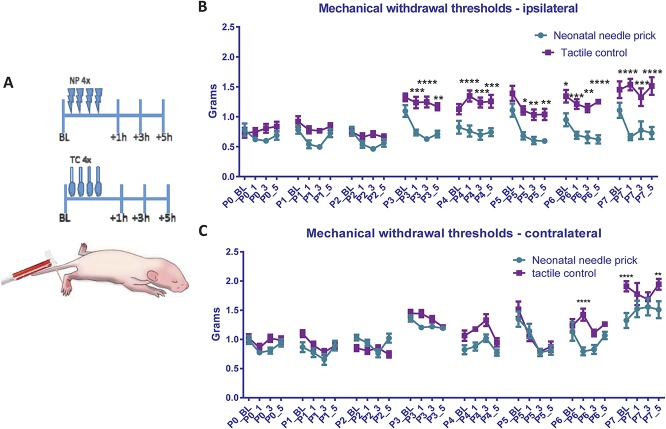Figure 1.
Mechanical sensitivity during the first week of life after repeated neonatal procedures. (A) The time course of the experiment. Rat pups (littermates) either received 4 tactile stimuli (cotton swab to the left hind paw, N = 9 males and 2 females) or noxious NPs (N = 10 males and 3 females). Mechanical withdrawal thresholds in the ipsilateral and contralateral paws were tested daily using calibrated von Frey filaments, at baseline (before any repeated neonatal procedures), and at 1, 3, and 5 hours after. (B and C) Changes in mechanical withdrawal thresholds after repeated neonatal procedures in the ipsilateral (B) and contralateral (C) hind paw. Mechanical withdrawal threshold increased after the third postnatal day in tactile controls. Baseline mechanical sensitivity was comparable between the 2 neonatal procedure groups. However, after NPs, ipsilateral mechanical withdrawal thresholds were significantly lower compared with tactile controls, indicating the development of mechanical allodynia from postnatal day 3 to 7. In addition, neonatal NPs led to significantly lower mechanical thresholds in the contralateral hind paw on postnatal day 6 and 7. BL, baseline measurement; NP, needle prick; P(0-7), postnatal day 0 to 7; _1, _3, and _5: measurement 1, 3, and 5 hours after NP/tactile stimulus; TC, tactile control stimulus. Data presented as mean ± SEM, *P < 0.05, **P < 0.01, ****P < 0.0001, between treatment comparisons.

